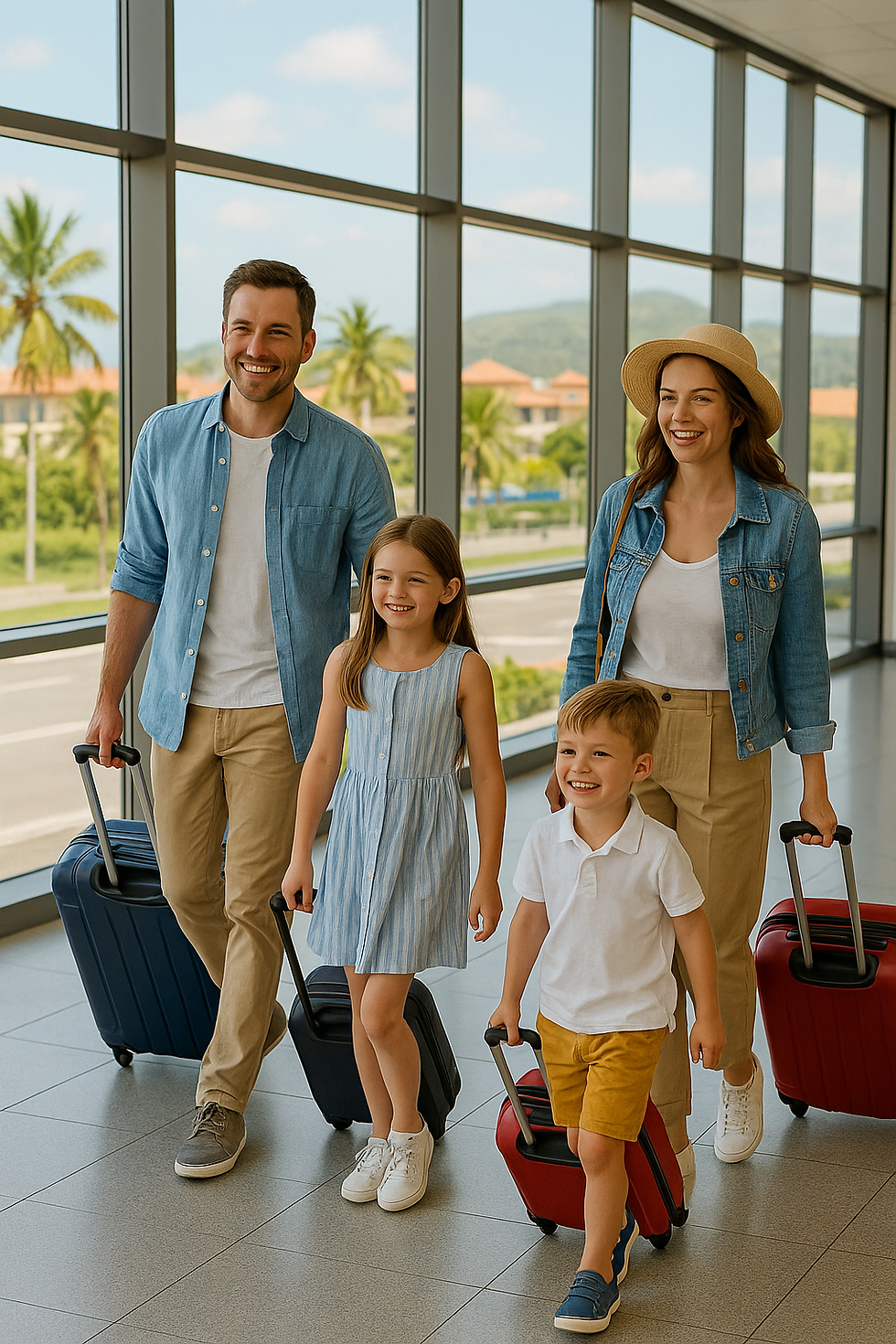Language Barriers: Tools and Tips for Effective Communication
- Marge Nellis
- Jul 20
- 4 min read

Traveling to a country where you don’t speak the language can be one of the most exciting—and intimidating—parts of the journey. Whether you’re ordering dinner in Tokyo, asking for directions in Rome, or navigating a train station in Istanbul, language barriers can create unexpected challenges. But with a few helpful tools and a little preparation, you can communicate with confidence anywhere in the world.
Here’s how to overcome language barriers with ease, using modern tech, old-school charm, and practical tips to make every interaction abroad smoother and more enjoyable.
1. Download a Reliable Translation App
Smartphones have revolutionized travel communication. The best translation apps now offer real-time voice translation, offline access, and even photo-based translation for menus or signs. Here are some traveler favorites:
Google Translate: One of the most powerful and versatile apps, it offers translations in over 100 languages, including camera translation and offline mode.
iTranslate: Great for both text and voice translation, and includes a travel-specific phrasebook.
SayHi: Designed for real-time conversations, with voice translation and playback in your chosen accent.
Papago: Especially useful in Asian countries (Korean, Japanese, Chinese), with clean UI and visual translation.
💡 Pro Tip: Download the language pack for offline use before your trip—you never know when Wi-Fi will fail.
2. Learn Key Phrases in the Local Language
Even if you're not fluent, knowing a few basic phrases shows respect and effort—and often leads to better service and warmer smiles. Here are helpful phrases to learn:
Hello / Goodbye
Please / Thank you
Yes / No
Excuse me / I’m sorry
Do you speak English?
I don’t understand.
Where is the bathroom / train station / hotel?
How much does this cost?
Many language apps like Duolingo, Memrise, or Babbel offer quick daily lessons that build basic vocabulary for travelers. Practice a few minutes a day leading up to your trip, and it will make a big difference.
3. Use Visuals and Body Language
When words fail, let gestures do the talking. Pointing to items on a menu, showing pictures, or using maps can help clarify your intent. Most people are surprisingly good at picking up on context, especially if you remain friendly and patient.
Also helpful:
Carry a hotel business card in the local language in case you need help getting back.
Use a translation card (printed or digital) that explains dietary restrictions or medical conditions in the local language.
If you're stuck, draw! A quick sketch of a taxi, train, or sandwich often gets the point across.
4. Be Mindful of Tone and Cultural Nuance
Language is more than just words—it’s tone, volume, and context. What may seem polite in one culture could feel aggressive in another.
Tips to remember:
Speak slowly and clearly, but not loudly.
Smile—it’s the universal icebreaker.
Avoid using slang, sarcasm, or idioms (e.g., “hit the road” doesn’t always translate well).
Respect personal space and avoid overly animated gestures in more conservative cultures.
A little cultural sensitivity can go a long way in building bridges.
5. Use Tech Tools Beyond Translation Apps
In addition to dedicated translation apps, there are other tools that help you navigate language on the go:
Google Lens: Translate menus, street signs, and documents with your camera.
TripLingo: Offers translation, cultural tips, safety tools, and even a Wi-Fi dialer for making international calls.
Voice assistants: Siri and Google Assistant can help define words, locate nearby services, or even speak for you.
Some travel booking sites and apps also allow you to filter by language preferences, ensuring tours and experiences are conducted in English or your native language.
6. Stay in Places Where Language Support Is Available
If you’re especially nervous about communication, consider booking accommodations where English-speaking staff are available—or use a travel advisor to help arrange services that meet your comfort level.
Better yet, Travel With McNellis can help you choose tours, hotels, and guides that suit your language preferences, so you can enjoy your destination without the stress.
7. Be Patient and Keep a Good Attitude
Communication may not always go smoothly—and that’s okay. Some of the most meaningful travel moments come from working through misunderstandings with kindness and creativity.
When you hit a language barrier:
Take a breath and stay calm.
Use the tools you have—apps, gestures, and patience.
Be open to laughter and learning in the moment.
Often, the effort you make to connect—even imperfectly—leaves the strongest impression.
Travel Is About Connection—Not Perfection
You don’t need to be fluent to navigate the world—you just need to be prepared, open, and willing to engage. With the right tools and mindset, language barriers become stepping stones to richer, more memorable travel experiences.
At Travel With McNellis, we help you travel with confidence—whether you’re headed to a remote village or a bustling foreign capital. Let us assist in planning a journey that’s culturally immersive, but also supportive of your comfort zone.
Your next great adventure doesn’t require perfect words—just a curious spirit. Let us help you get started →
_edited.png)



Comments